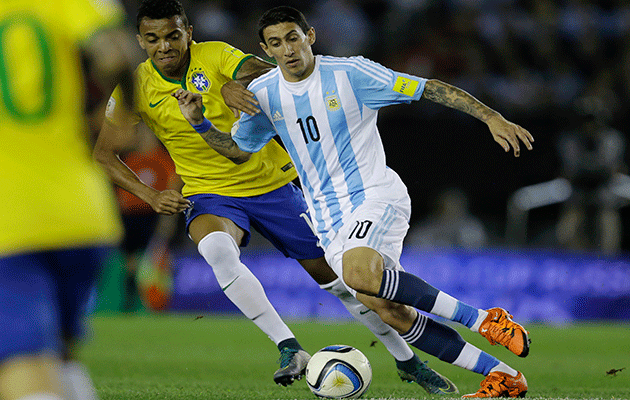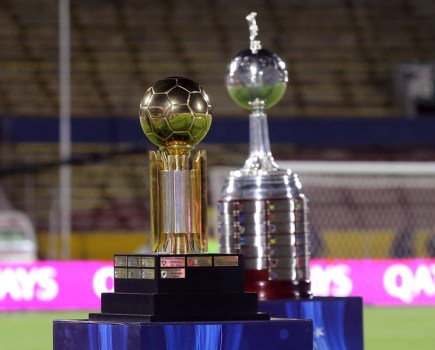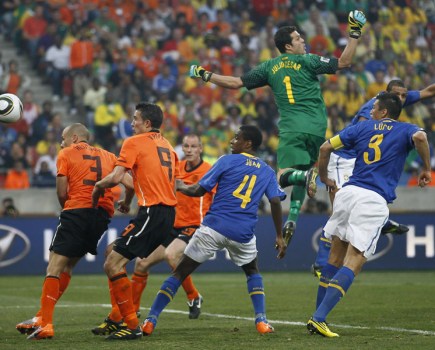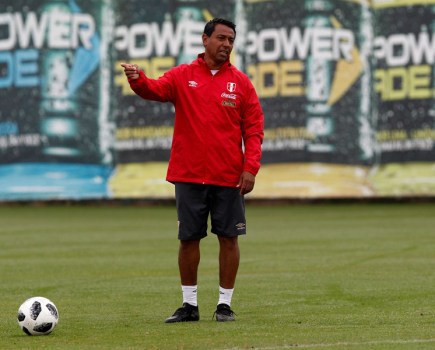The fixture list is different from previous campaigns, so it is pure co-incidence that Argentina visit Colombia in the fourth round of South America’s World Cup qualifiers, just as they did on the road to Japan and South Korea, Germany, South Africa and Brazil.
As Gerardo Martino’s men made the long journey north, some in Argentina were dwelling on the similarity between now and the last trip to Barranquilla, almost exactly four years ago. Then, as now, Argentina had got off to a bad start. They had beaten Chile at home, but then had suffered a historic defeat to Venezuela before being held at home by Bolivia. It seemed that coach Alejandro Sabella’s job might be on the line.
At half time in Colombia, his prospects were looking even bleaker. Argentina were a goal down. Sabella made his move. Sergio Aguero was introduced at the interval, forming an attacking trident with Gonzalo Higuain and Lionel Messi. The Aguero-Messi combination dug Argentina out of a hole. Both scored as Argentina hit back to win 2-1. Sabella had found his team. There were no more defeats until the last round, when the place in Brazil had already been booked. The game in Colombia began a run of 8 wins and 4 draws in which Lionel Messi was at last able to reproduce his club form for the national team.
It is unlikely that Tuesday’s game will produce the same metamorphosis. On this occasion Martino does not have the same attacking depth that Sabella was able to count on in 2011. Messi and Aguero are both injured, and have been joined on the injury list by Carlos Tevez and Javier Pastore. There was even a scare about Higuain, who picked up a knock in Friday night’s 1-1 draw with Brazil. At least Angel Di Maria looks in fine form, and Martino will hope that his pace on the counter attack can alarm the Colombia defence. A draw would do little to improve Argentina’s position in the table (they lie 9th out of 10), but it would show resilience in difficult conditions.
This is a big game for the hosts, as well. In the run up to Brazil 2014, coach Jose Pekerman said that the tournament would mark Colombia’s rise to the world game’s top table. Step one was completed when the team impressed on the way to their first quarter final. But subsequent form has been disappointing. Colombia scored just one goal in the recent Copa America, and though they have four points from the first three rounds (double Argentina’s total) they have made an uncertain start to the current campaign.
Last Thursday away to Chile they tried a different idea. They played three defensive midfielders, Carlos Sanchez flanked by Alexander Mejia and newcomer Daniel Torres – and instead of their typical midfield elaboration, they looked to play quickly up to the front three, with James Rodriguez operating behind Luis Fernando Muriel and Jackson Martinez.
It was a gameplan that brought the best out of the powerful Muriel, Colombia’s best player on the night and the creator of the equalising goal scored by Rodriguez. Colombia were helped, though, by the absence through suspension of Marcelo Diaz, the central midfielder who normally fills the space in front of the centre backs with great intelligence. Argentina will hope that Javier Mascherano can shake off a knock against Brazil to anchor the midfield with his customary excellence. His duel with Rodriguez will be important to the outcome.
Colombia are forced to make a change, with Carlos Sanchez suspended. The probability is that he will be replaced by a passing midfielder – in the intense afternoon heat of Barranquilla (the game kicks off at 3:30 local time) patient possession is to be prized. The Colombians, of course, have had an extra day to prepare, after torrential rain in Buenos Aires postponed Argentina’s game against Brazil for 24 hours. The Argentines would love to see a bit more of that rain on Tuesday, cooling them down as the race to Russia hots up.







